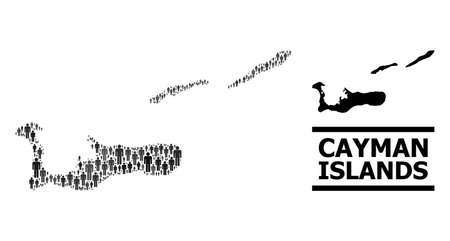Introduction: Why Whole Life Insurance Matters
When it comes to securing your family’s financial future, few tools are as versatile as whole life insurance. Unlike term policies that expire after a set period, whole life insurance provides lifelong coverage and builds cash value over time. For self-employed professionals and families alike, this means more than just a death benefit—it’s a cornerstone of comprehensive risk management and long-term financial planning.
In the United States, where healthcare costs can be unpredictable and retirement planning is often left to individuals, having a safety net that grows with you is invaluable. Whole life insurance offers guaranteed payouts, fixed premiums, and the ability to borrow against your policy’s cash value when unexpected expenses arise or business opportunities knock. These unique features make it not just a protection plan but also a strategic asset for those who want stability in an ever-changing financial landscape.
This article explores real-life stories of Americans who have leveraged whole life insurance to overcome challenges, seize opportunities, and protect what matters most. Through these case studies, we’ll uncover practical lessons on how whole life insurance can fit into your broader financial strategy—whether you’re building a business, planning for retirement, or simply safeguarding your loved ones’ future.
Legacy Planning: Protecting the Family Business
In the world of self-employment, protecting what you’ve built is not just about your own future—it’s about securing your family’s legacy. This became clear to Tom, a second-generation small business owner in Ohio, who faced the challenge of passing his successful landscaping company to his daughter while ensuring his wife and other children were also protected financially. As market volatility increased and health concerns grew with age, Tom realized that relying solely on business revenue or savings could jeopardize everything he had worked for.
The Strategic Move: Whole Life Insurance as a Risk Mitigation Tool
Tom consulted with his financial advisor and chose a whole life insurance policy as a cornerstone of his succession plan. The policy wasn’t just about providing a death benefit; it was designed to address multiple risks that traditional estate planning might overlook. Here’s how Tom structured his plan:
| Challenge | How Whole Life Insurance Helped |
|---|---|
| Unequal Asset Distribution | Policy proceeds created liquidity so non-business heirs received fair value, avoiding family disputes. |
| Business Continuity | The death benefit funded a buy-sell agreement, allowing Toms daughter to take full ownership without financial strain. |
| Tax Liabilities | The payout covered potential estate taxes, ensuring the business remained intact rather than being liquidated to pay IRS bills. |
| Market Volatility | The guaranteed cash value provided a stable backup during economic downturns, supporting payroll and operations if needed. |
Lessons Learned: Why Whole Life Insurance Mattered During Uncertain Times
When the unexpected happened—an economic recession hit just months before Tom retired—the stability of his whole life policy proved invaluable. While competitors scrambled for loans or sold assets at a loss, Tom’s business weathered the storm. The insurance cash value provided emergency funds, and when he passed away two years later, his daughter seamlessly took over the company without needing to sell off parts of the business or dispute with siblings over inheritance issues.
Key Takeaways for Self-Employed Entrepreneurs
- Diversify Your Succession Plan: Don’t rely solely on wills or trusts—insurance adds an extra layer of risk management.
- Plan Early: Setting up coverage before health or market changes keeps premiums manageable and options open.
- Consider All Stakeholders: Think beyond yourself—plan for both active heirs and those not involved in the business.
- Cushion Against Uncertainty: Cash value features can bridge tough times, offering flexibility traditional plans lack.
If you’re self-employed and want to protect your legacy, consider how whole life insurance can offer both immediate security and long-term peace of mind for your loved ones and your business.

3. Handling the Unexpected: Health Crisis Case Study
When you’re self-employed, unexpected events can have a huge impact on your finances—and your peace of mind. Let’s look at a real-life scenario that highlights how whole life insurance goes beyond just a payout after death. The Johnson family, based in Texas, had been paying into their whole life policy for over a decade. When Mr. Johnson suffered a sudden stroke, the medical bills and loss of income threatened to derail their financial stability.
Fortunately, because they’d built up significant cash value in their whole life policy, they were able to access those funds quickly through a policy loan. This allowed them to cover hospital expenses, rehabilitation costs, and daily living expenses without dipping into emergency savings or taking on high-interest debt. The process was straightforward—the insurer made the funds available within days, and there was no need for lengthy approval processes like with traditional loans.
This experience taught the Johnsons two key lessons about risk management. First, whole life insurance isn’t just about protecting loved ones after you’re gone; it’s also about providing living benefits when life throws you a curveball. Second, having quick liquidity during a crisis can make all the difference, especially for self-employed individuals who may not have traditional safety nets like employer-sponsored disability benefits.
For anyone running their own business or freelancing, this story underscores the importance of considering all angles when it comes to risk control. Whole life insurance offers more than just long-term protection—it provides a flexible tool that can help keep your financial plan intact when things don’t go as expected.
Building Wealth Safely: The Role of Whole Life in Asset Diversification
In the landscape of wealth accumulation, entrepreneurs and self-employed professionals often face unique risks. Business income can be unpredictable, and market volatility can threaten both personal and corporate financial stability. In this section, we explore how whole life insurance can serve as a risk-controlled pillar within a diversified investment portfolio, illustrated by a real-life case study from my client base.
A Strategic Move: Integrating Whole Life for Stability
One of my clients, a tech startup founder in Austin, Texas, spent years reinvesting profits into his business while keeping most assets tied up in company equity and volatile market instruments. Despite impressive growth, he realized his personal net worth was exposed to significant risk—if the business faced a downturn or a market crash occurred, his family’s financial future could be jeopardized.
The Diversification Decision
We conducted a risk assessment and recognized the importance of adding more stable, non-correlated assets to his portfolio. Whole life insurance emerged as an ideal fit for several reasons:
- Guaranteed Cash Value Growth: Unlike stocks or business equity, whole life cash value accumulates steadily regardless of market swings.
- Liquidity for Opportunities: Policy loans offer quick access to capital without liquidating other investments or impacting credit scores.
- Tax-Advantaged Growth: Cash value grows tax-deferred and can be accessed tax-free via policy loans when structured correctly.
- Legacy Planning: A guaranteed death benefit ensures his family receives a tax-free legacy regardless of business outcomes.
Comparing Risk Profiles: Portfolio Before & After Whole Life Integration
| Asset Type | % Allocation (Before) | % Allocation (After) | Risk Level |
|---|---|---|---|
| Business Equity | 60% | 45% | High |
| Stocks/Bonds | 30% | 25% | Medium-High |
| Real Estate | 10% | 10% | Medium |
| Whole Life Insurance | 0% | 20% | Low |
The Result: Balanced Growth with Downside Protection
This strategic shift provided my client with several advantages. He now enjoys peace of mind knowing that part of his net worth is shielded from market and business cycles. When faced with an unexpected opportunity—a chance to acquire new technology for his company—he tapped into his policy’s cash value without disrupting other investments or incurring costly debt.
Key Lesson Learned: Don’t Put All Your Eggs in One Basket
This story highlights a fundamental lesson for anyone building wealth independently: true financial security comes from balancing upside potential with downside protection. Whole life insurance isn’t just about death benefits; it’s a living asset that can anchor your portfolio against the unpredictable tides of entrepreneurship and the markets.
5. Learning from Mistakes: Common Pitfalls and How to Avoid Them
Misunderstanding the Policy Structure
One of the most common mistakes people make with whole life insurance is not fully understanding how the policy works. Many assume it’s just like term insurance, but with a higher premium. For example, I once consulted for a freelance designer who thought she could stop paying premiums after ten years and still keep her full coverage. She learned the hard way that unless her policy was paid up or dividends covered premiums, lapsing payments would cause her coverage to shrink or disappear. Always clarify your obligations before signing on the dotted line.
Ignoring Cash Value Implications
Another pitfall is overlooking how loans or withdrawals from the cash value affect the death benefit and long-term growth. An IT consultant I worked with used his policy’s cash value as an emergency fund without realizing that unpaid loans, plus interest, would be deducted from his beneficiaries’ payout. To avoid this, treat policy loans as temporary solutions and have a plan to repay them promptly.
Underinsuring Due to Budget Concerns
Some clients, especially those self-employed or with variable incomes, try to save on premiums by purchasing smaller policies. A marketing professional regretted this decision when she realized her policy wouldn’t cover her mortgage and children’s college expenses if something happened to her. It’s essential to balance affordability with adequate protection—consider laddering with term insurance if needed.
Lack of Regular Review
Whole life policies are not “set it and forget it” products. A tech start-up founder discovered too late that changes in his business meant his policy no longer matched his legacy goals. Make it a habit to review your coverage every couple of years or after major life events, such as marriage, childbirth, or business growth.
Tips to Steer Clear of These Issues
- Work with a knowledgeable advisor: Seek out professionals who can break down complex concepts in plain English and who understand unique self-employed risks.
- Read your policy carefully: Take time to understand all terms, conditions, and costs—ask questions until you’re clear.
- Treat your policy as part of your larger financial plan: Integrate it with your retirement, emergency fund, and succession planning strategies.
- Review regularly: Life changes—make sure your insurance keeps pace.
By learning from others’ mistakes and staying proactive, you can harness the benefits of whole life insurance while avoiding its most common pitfalls.
6. Conclusion: Key Takeaways and Practical Advice
Best Practices from Real-Life Experiences
After exploring various real-life stories about whole life insurance, it’s clear that a strategic approach makes all the difference. For freelancers, small business owners, and individuals, the most successful outcomes came from those who took time to thoroughly assess their long-term needs, worked closely with trusted advisors, and reviewed policies regularly as circumstances changed. Proactive communication with insurance professionals was a recurring theme in every positive case study.
Important Lessons Learned
Understand Your Why
Don’t buy whole life insurance just because someone recommends it—know exactly why you need it. Whether you’re protecting your business legacy or creating a financial safety net for your family, purpose-driven planning leads to better decisions.
Flexibility Is Key
Life changes fast, especially when you’re self-employed or running a small business. Choose a policy that allows for adjustments as your personal or professional situation evolves. This way, you’re never locked into an outdated plan that no longer fits your goals.
Cash Value Isn’t a Bonus—It’s a Tool
The ability to borrow against your policy’s cash value is a powerful risk management strategy. Several stories illustrated how tapping into this feature helped clients navigate emergencies, capitalize on business opportunities, or supplement income during lean times.
Actionable Insights for Decision-Makers
- Consult multiple experts: Don’t rely on one opinion. Compare options and seek advice from financial advisors familiar with the unique challenges of self-employment and entrepreneurship.
- Review annually: Set a yearly appointment to review your policy and ensure it still meets your goals.
- Prioritize transparency: Ask questions until you fully understand every fee, term, and benefit of your policy.
Your Next Steps
If you’re considering whole life insurance, start by listing your top priorities—whether that’s stability for your loved ones, liquidity for your business, or simply peace of mind. Use the lessons learned in these case studies to guide conversations with professionals and make informed choices tailored to your unique path as a freelancer or small business owner. Remember: Whole life insurance is not just a product; it’s a long-term strategy designed to protect what matters most—your future.


